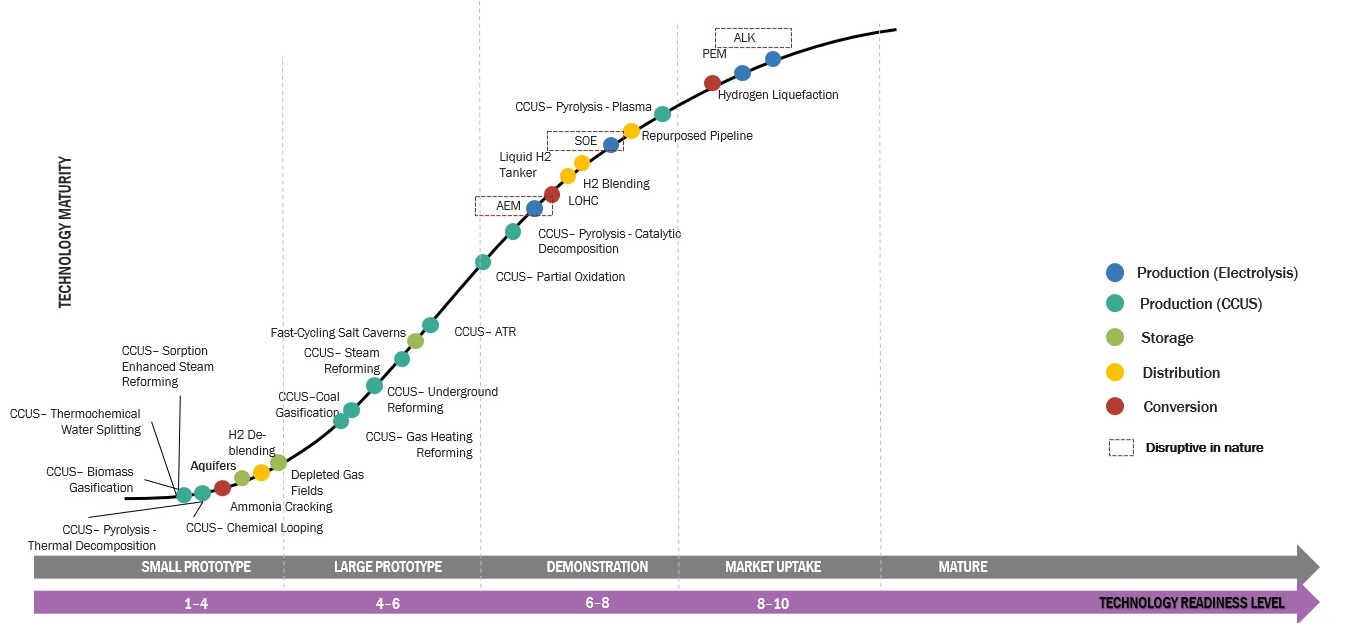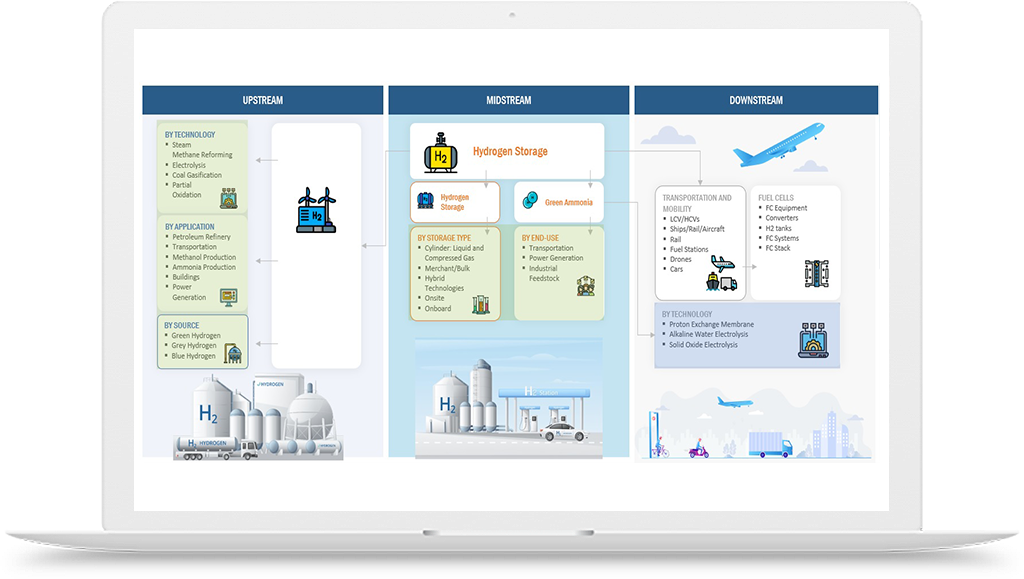Gray Hydrogen Future
BENCHMARKING TOP 20 COMPANIES, STARTUP, PLAYERS IN GRAY HYDROGEN ECONOMY
Identify the top 20 companies, startups, and players in Gray Hydrogen Economy! Will they embrace innovation? Will they transform the gray hydrogen industry into a vibrant shade of sustainability?
- How can lead generation strategies unlock new opportunities within the gray hydrogen sector, driving growth and profitability?
- Are you harnessing the power of lead generation to disrupt the gray hydrogen landscape and position your brand at the forefront of this emerging market?
- Discover how innovative approaches can capture the attention of gray hydrogen leaders, positioning your company as a key player in this transformative industry.
- Uncover the secrets to identifying and engaging with decision-makers within the gray hydrogen sector, ensuring your lead generation efforts yield high-quality prospects.
- How can lead generation strategies help convert gray hydrogen consumers into advocates for sustainable alternatives, accelerating the shift towards a cleaner energy landscape?
Get in-depth analysis on all the above points: ACCESS REPORT

GET COMPREHENSIVE REPORT ON
GRAY HYDROGEN MARKET
Read More..
Gray Hydrogen Future in the Energy Transition
Gray hydrogen future in the energy transition is uncertain. As the world increasingly focuses on reducing carbon emissions, gray hydrogen is losing favor due to its high carbon footprint. Many countries have set ambitious targets to reach net-zero emissions by 2050, which requires a significant reduction in greenhouse gas emissions. This has led to a growing interest in cleaner hydrogen production methods, such as green and blue hydrogen.
The cost of producing and transporting gray hydrogen in comparison to greener alternatives will determine how long it is used in the energy sector. Green and blue hydrogen production should become more cost-competitive with gray hydrogen as technology develops. Furthermore, a lot of nations are providing incentives and subsidies to promote the use of greener energy sources, which could further reduce the price of blue and green hydrogen.
Moreover, corporations are facing mounting pressure to implement sustainable and eco-friendly practices from governments, investors, and customers. Consequently, businesses that stick with gray hydrogen may run the risk of financial and reputational damage.
In summary, the gray hydrogen future in the energy transition is uncertain. While it may continue to play a role in the short-term due to its widespread use and existing infrastructure, the long-term trend is towards cleaner alternatives such as green and blue hydrogen.
TECHNOLOGICAL DEVELOPMENTS IN GRAY HYDROGEN PRODUCTION
The most widely produced form of hydrogen globally is called gray hydrogen. It is created through a process called steam methane reforming (SMR), which combines natural gas with steam at a high temperature to create carbon monoxide and hydrogen. But carbon dioxide (CO2) is also released during the process, adding to the emissions of greenhouse gases.
The development of new technologies to produce gray hydrogen in a more environmentally friendly and sustainable manner has garnered increasing attention in recent years. Notable technological advancements in the production of gray hydrogen in the future include:
- Carbon capture and storage (CCS): CO2 emissions from industrial processes are captured by CCS technology and stored underground or in other geological formations. The production of gray hydrogen can have its environmental impact lessened by utilizing CCS to capture and store a sizable amount of the CO2 emissions related to the process.
- Blue hydrogen: Blue hydrogen is a form of hydrogen that is created by SMR with the use of CCS technology from natural gas. By capturing and storing the CO2 emissions brought about by the production of gray hydrogen, a more sustainable and clean form of hydrogen is produced.
- Methane pyrolysis: : A novel method called methane pyrolysis heats natural gas to high temperatures in order to produce solid carbon and hydrogen. There are no CO2 emissions from this process, and the solid carbon is a useful byproduct.
- Electrolysis using renewable energy: Utilizing electricity, the process of electrolysis divides water into hydrogen and oxygen. A more carbon-neutral and sustainable method of producing gray hydrogen is to use renewable energy sources like solar or wind power.
With these technological advancements, producing gray hydrogen may have a much smaller environmental impact and become a more sustainable and practical energy transition option. It's crucial to remember that these technologies are still in their infancy and will need more funding and research to catch up to more established techniques for producing gray hydrogen at a reasonable cost.
GET COMPREHENSIVE REPORT ON
GRAY HYDROGEN MARKET
Leading Players in Gray Hydrogen Market:
The gray hydrogen future market is dominated by a few large players in the oil and gas industry that have been producing hydrogen as a byproduct of their operations for decades. Some of the leading players in the gray hydrogen market include:
- Air Liquide
- Linde plc
- Air Products and Chemicals, Inc.
- Praxair Technology, Inc.
- Messer Group GmbH
These businesses have vast experience producing, storing, and distributing hydrogen. They also have the infrastructure necessary to enable the production of hydrogen on a large scale. However, many of these businesses are also making investments in renewable energy sources and developing technologies to lower the carbon footprint of their hydrogen production, in response to the growing demand for green hydrogen and the increased focus on sustainability. These businesses thus participate in the green hydrogen industry.
Gray Hydrogen Production
Steam methane reforming (SMR) is a process that produces hydrogen, carbon dioxide, and carbon monoxide by reacting natural gas with steam at high temperatures and pressures. This process is commonly used to produce gray hydrogen. After this process, the hydrogen is refined for use in a variety of industrial applications.
With SMR producing about 95% of the hydrogen produced worldwide, it is currently the most widely used method. But there are also large emissions of greenhouse gases during the production process, mainly carbon dioxide. SMR-based hydrogen production is thought to be a major contributor to global carbon emissions, with an estimated 830 million tonnes of CO2 emissions annually.
Coal gasification, which produces hydrogen and carbon monoxide by reacting coal with steam, and partial oxidation, which produces hydrogen and carbon monoxide by reacting natural gas with oxygen, are two more processes for creating gray hydrogen. There are considerable greenhouse gas emissions from these processes as well.
Strengths and Limitations of Gray Hydrogen
Strengths:
- Lower Cost: Because natural gas is widely available and used as the main feedstock for the production of gray hydrogen, it is currently the least expensive form of hydrogen to produce.
- Well-Established Technology: The technology for producing gray hydrogen is well-established, having been put to use for many years, making it a mature system with a solid track record.
- Versatility: Gray hydrogen has a broad range of uses in the steel and glass industries, as well as in the production of chemicals, fertilizers, and refinements.
- Carbon Capture: To lower the carbon emissions related to the production process, gray hydrogen production can be combined with carbon capture technologies.
Limitations:
- Carbon Emissions: The production of gray hydrogen is a highly carbon-intensive process that releases a significant amount of greenhouse gases into the atmosphere, which exacerbates climate change.
- Negative Environmental Impact: The production of gray hydrogen may have adverse effects on the environment, including the release of pollutants into the atmosphere, groundwater pollution, and land subsidence.
- Dependence on Natural Gas: The production of gray hydrogen is primarily dependent on natural gas as a feedstock, which leaves it vulnerable to fluctuations in price and interruptions in the supply chain.
- Unsustainable: As the globe shifts toward decarbonization and less reliance on fossil fuels, gray hydrogen is not a viable long-term solution.
Environmental Impact of Gray Hydrogen
Because gray hydrogen production has a high carbon footprint, it may have a substantial environmental impact. The main effect that the production of gray hydrogen has on the environment is the release of greenhouse gases during the steam methane reforming process, especially carbon dioxide (CO2).
One of the main causes of climate change and global warming is CO2. Since the production of gray hydrogen contributes significantly to greenhouse gas emissions, it is not a long-term sustainable solution. Particularly in places with high air pollution levels, the carbon emissions linked to gray hydrogen can also cause respiratory issues and environmental pollution.
In addition to releasing particulate matter and sulfur dioxide (SO2) and nitrogen oxides (NOx), the production of gray hydrogen may also release other air pollutants. These contaminants may be a factor in respiratory disorders, acid rain, and other health problems.
Moreover, producing gray hydrogen uses a lot of energy and water, which raises the possibility of a water shortage and increases the need for fossil fuels.
In conclusion, the production of gray hydrogen has a major negative environmental impact, making it a less sustainable solution than other forms of hydrogen production, like green hydrogen.
GET COMPREHENSIVE REPORT ON
GRAY HYDROGEN MARKET
Gray Hydrogen Comparison
By a process known as coal gasification or steam methane reforming (SMR), gray hydrogen can be produced from fossil fuels like natural gas, coal, or oil. As a result of this process, carbon dioxide (CO2) is released into the atmosphere, which means that gray hydrogen will eventually contribute significantly to greenhouse gas emissions.
When it comes to environmental impact, green hydrogen—which is generated through electrolysis using renewable energy sources like solar and wind power—is more favorable than gray hydrogen. Since green hydrogen emits no carbon dioxide, it is regarded as a clean and sustainable energy source.
When compared to blue hydrogen, which is also made from fossil fuels but absorbs and holds onto carbon emissions to keep them from entering the atmosphere, gray hydrogen also has certain drawbacks. As a result, blue hydrogen is less harmful to the environment than gray hydrogen.
Compared to green or blue hydrogen, gray hydrogen is less expensive to produce because its manufacturing method is more well-established and requires less infrastructure investment. However, the price of gray hydrogen does not account for the potentially significant costs associated with carbon emissions and their impact on the environment.
In conclusion, despite the fact that gray hydrogen is now the most popular variety because of its more affordable production, its carbon emissions make it unsustainable for use in the long run. Gray hydrogen use is anticipated to gradually decline as the world moves toward decarbonization and net-zero emissions, with an increase in the use of green and blue hydrogen.
Gray Hydrogen Regulations and Policies
Gray hydrogen is a widely used industrial gas, and as such, its production and use are subject to various regulations and policies. Here are some examples of regulations and policies that apply to gray hydrogen:
- Emission regulations: The production of gray hydrogen is linked to high emissions of carbon dioxide, which may exacerbate climate change. Because of this, a lot of nations and areas have put in place emissions laws requiring producers of hydrogen to either cut back on their emissions or purchase carbon credits. Hydrogen producers can purchase carbon credits to offset their emissions, and the European Union's Emissions Trading System (ETS) caps the amount of carbon dioxide that specific industries can emit.
- Safety regulations: Since hydrogen is a highly flammable gas, extreme caution must be taken during production, storage, and transportation. Safety regulations, like those established by the Occupational Safety and Health Administration (OSHA) in the United States, are mandatory for gray hydrogen production facilities in numerous countries.
- Renewable energy policies: An increasing number of governments are putting laws into place to encourage the use of renewable energy sources, like solar and wind power, as the world moves toward a low-carbon energy system. Since electrolysis can be powered by renewable energy, these policies can have a big impact on the production of gray hydrogen by lowering the carbon footprint of hydrogen production.
- Incentives: Government subsidies or tax breaks may be available to producers of gray hydrogen in certain nations in an effort to promote the advancement of low-carbon technology. Gray hydrogen producers may profit from tax credits provided by the US federal government for carbon capture and storage projects.
- International agreements: The need for gray hydrogen may be impacted by the numerous international agreements that many nations have signed to cut their greenhouse gas emissions. One possible outcome of the Paris Agreement is a move away from fossil fuels and toward low-carbon technologies like green hydrogen. The agreement aims to keep global warming to less than 2°C over pre-industrial levels.
Overall, gray hydrogen future production and use are subject to a wide range of regulations and policies aimed at reducing carbon emissions and promoting the transition to a low-carbon energy system.
GET COMPREHENSIVE REPORT ON
GRAY HYDROGEN MARKET
Frequently Asked Questions (FAQ):
Is grey hydrogen better than fossil fuels?
Grey hydrogen, which is produced from fossil fuels without carbon capture and storage, is not considered better than fossil fuels in terms of environmental impact since it still emits carbon dioxide. However, grey hydrogen can be a transitional solution in certain industries as efforts are made to shift towards greener alternatives like green or blue hydrogen.
Is grey hydrogen expensive?
Grey hydrogen is generally less expensive to produce compared to green or blue hydrogen due to the lower costs associated with fossil fuel extraction and processing. However, the overall cost competitiveness of grey hydrogen depends on factors such as the price of natural gas or coal and the cost of carbon emissions, which can vary regionally and over time.
Is blue hydrogen better than grey hydrogen?
Blue hydrogen is considered better than grey hydrogen from an environmental standpoint as it incorporates carbon capture and storage (CCS) technology to reduce carbon emissions. However, the overall sustainability of blue hydrogen depends on the source of natural gas and the effectiveness of CCS implementation.
How much CO2 does grey hydrogen produce?
Grey hydrogen production emits approximately 9-12 kilograms of CO2 per kilogram of hydrogen produced, primarily due to the carbon content of the fossil fuels used in the process, such as natural gas or coal.
















